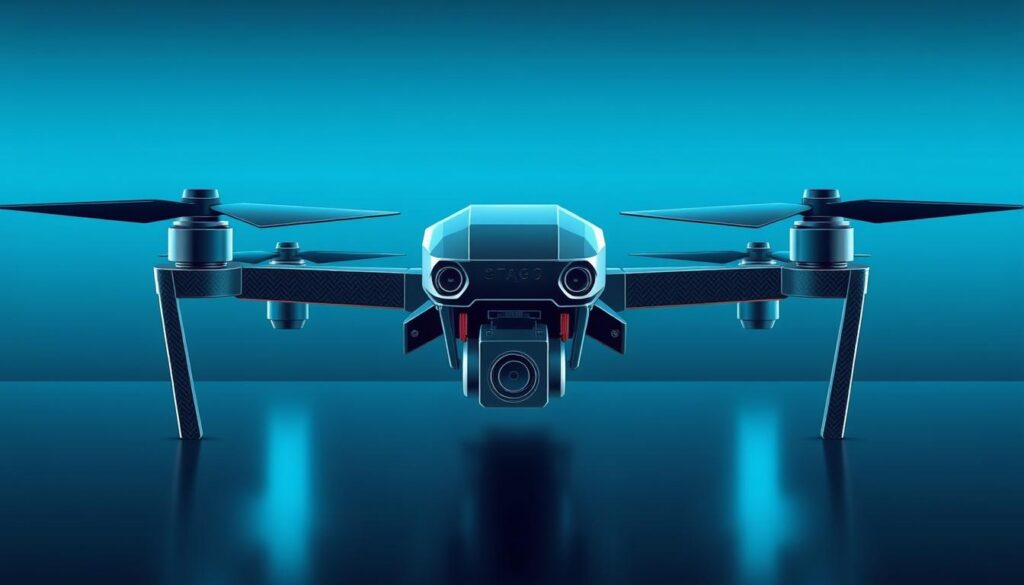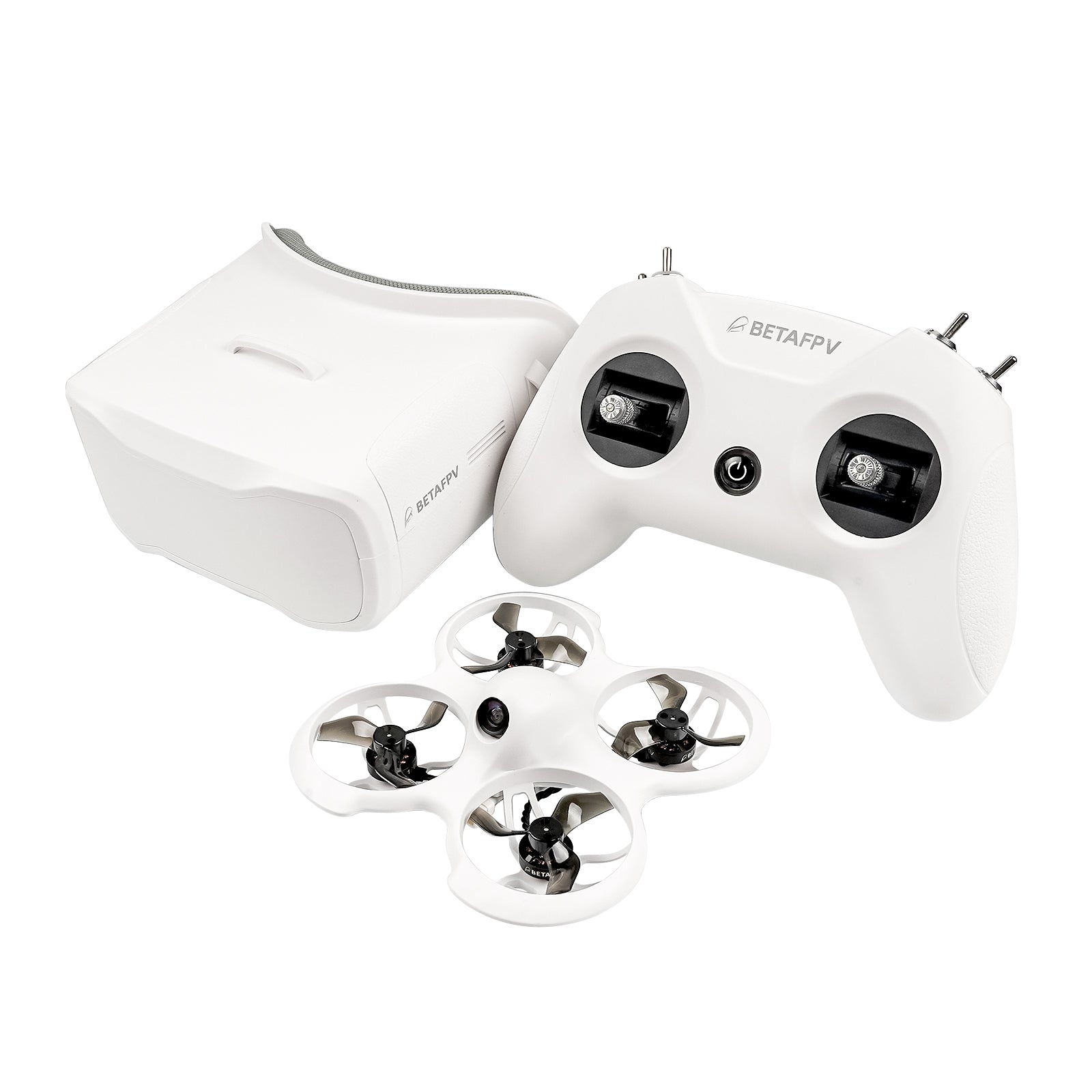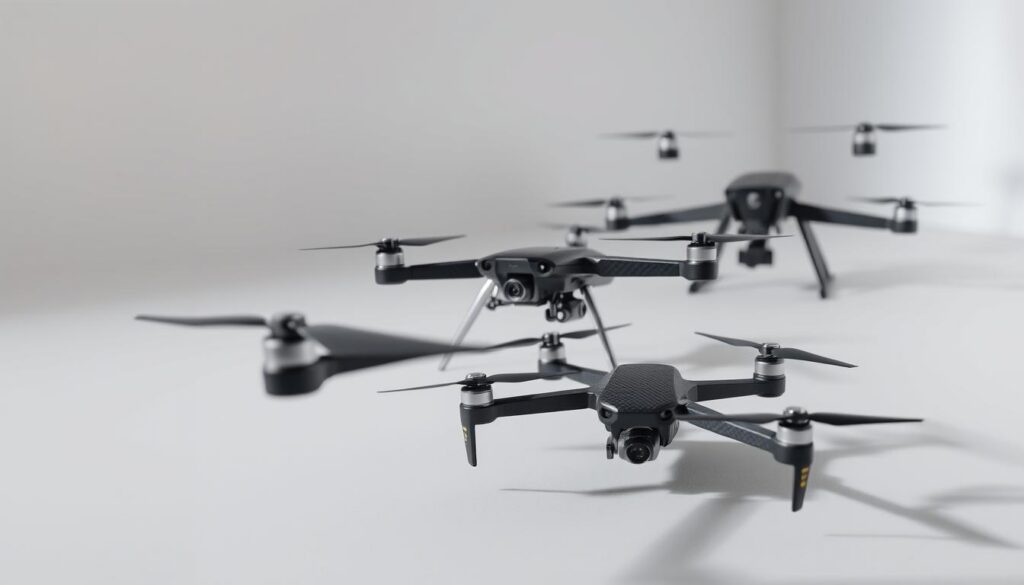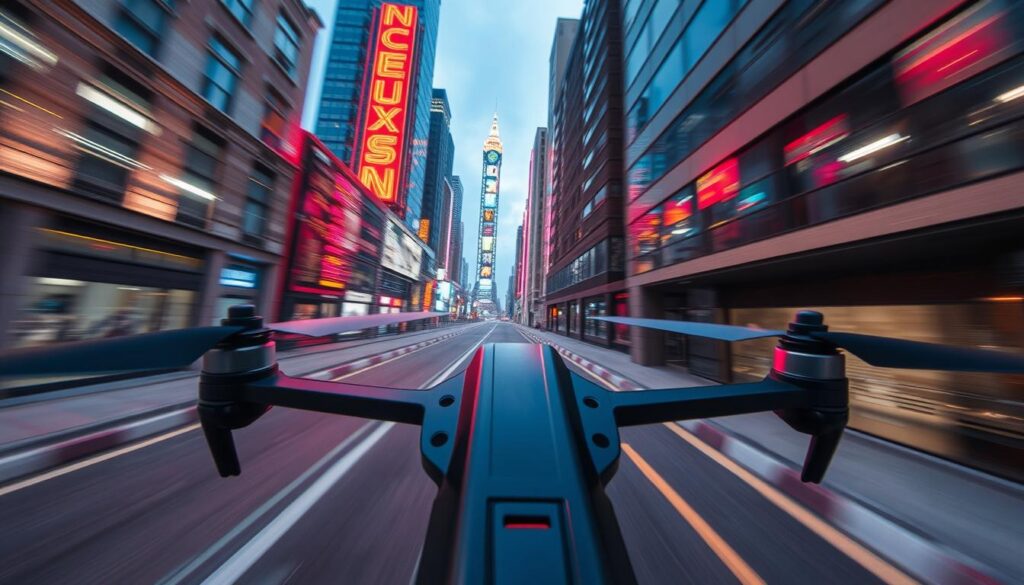The Ultimate FPV Drone Buying Guide for Beginners [2025]

Table of Contents
Welcome to the world of First Person View drones, where the thrill of flight meets cutting-edge technology. According to recent market trends, FPV drones have become increasingly popular among hobbyists and professionals alike.
As a beginner, navigating the vast array of options can be daunting. That’s why we’ve put together this comprehensive drone buying guide to help you make an informed decision. Whether you’re looking to capture stunning aerial footage or simply enjoy the thrill of flying, this guide will walk you through the key considerations for choosing the right beginner drone.
Key Takeaways
- Understanding the basics of FPV drones and their growing popularity
- Identifying key features to look for in a beginner-friendly drone
- Learning how to choose the right drone for your needs and budget
- Discovering the top considerations for a safe and enjoyable flying experience
- Getting started with FPV drones: tips and recommendations for beginners
What Are FPV Drones and Why They’re Taking Off in 2025
As we dive into 2025, FPV drones are becoming increasingly popular, thanks to their unique immersive drone experience. The thrill of flying through the lens of a drone, with the world unfolding in real-time, is an adventure like no other. Recent surveys indicate that this immersive experience is a major factor in their increasing popularity.
The Immersive Experience of First-Person View Flight
FPV drones offer a first-person view that simulates the sensation of flying. By wearing FPV goggles, pilots can see exactly what the drone’s camera sees, creating an incredibly immersive experience. This technology has advanced significantly, with drone technology advancements providing higher quality video feeds and more responsive controls.
The result is an experience that’s not just about flying a drone, but about being fully engaged in the flight. Pilots can explore complex environments, perform intricate maneuvers, and enjoy a sense of presence that’s hard to achieve with traditional drones.
How FPV Differs from Traditional Drone Flying
Unlike traditional drones, where the pilot views the drone from the ground, FPV drones provide a pilot’s-eye view. This fundamental difference changes how pilots interact with the drone, making the experience more intimate and engaging. FPV drones require a different set of skills, including understanding how to navigate through spaces based on the video feed from the drone.
The immersive experience of FPV drones also fosters a deeper connection between the pilot and the drone, making it a more personal and enjoyable hobby. As FPV drones continue to evolve, they are likely to attract even more enthusiasts to the world of drone flying.
Understanding FPV Drone Components
As we dive into the world of FPV drones, understanding the components that make up these high-performance machines is crucial for beginners. The performance, safety, and overall flying experience of an FPV drone depend on the quality and compatibility of its components.
Key Components of an FPV Drone
Frame and Build Quality
The frame is the backbone of your FPV drone, providing the structure to which all other components are attached. A sturdy frame can withstand crashes and provide a stable platform for your drone. When choosing a frame, consider the material (e.g., aluminum, carbon fiber), size, and design. A well-built frame ensures that your drone can withstand the rigors of flight and potential crashes.
Motors and Electronic Speed Controllers (ESCs)
Motors and ESCs work together to provide the power and control needed for flight. High-quality motors provide efficient power and durability, while ESCs regulate the speed of the motors, ensuring smooth and precise control. When choosing motors and ESCs, consider factors such as power output, efficiency, and compatibility.
Flight Controllers and Processors
The flight controller is the brain of your FPV drone, processing inputs from the pilot and sensors to control the drone’s movements. Modern flight controllers come with advanced features such as GPS, accelerometers, and gyroscopes, which enhance the drone’s stability and maneuverability. When selecting a flight controller, consider its processing power, compatibility with other components, and the features it offers.
Cameras and Video Transmission Systems
The camera and video transmission system provide the FPV experience, transmitting live video from the drone to the pilot’s goggles or monitor. High-quality cameras offer better image quality, while robust video transmission systems ensure a stable and latency-free feed. Consider factors such as camera resolution, transmission frequency, and signal strength when choosing these components.
Battery Types and Flight Time Expectations
The battery is a critical component that determines the flight time of your FPV drone. Lithium-polymer (LiPo) batteries are commonly used due to their high energy density and discharge rates. When choosing a battery, consider its capacity, discharge rate, and compatibility with your drone’s components. Understanding the characteristics of different battery types and their impact on flight time is essential for planning and executing successful flights.
Types of FPV Drones for Different Skill Levels
From ready-to-fly models to DIY builds, the FPV drone market offers something for everyone, regardless of skill level. The diverse range of FPV drones available means that pilots can choose a drone that perfectly matches their experience and flying style.
Ready-to-Fly (RTF) Options for True Beginners
Ready-to-Fly drones are perfect for those new to FPV flying. These drones come fully assembled and ready to use right out of the box, requiring minimal setup. RTF drones are an excellent choice for beginners who want to start flying immediately without worrying about the complexities of drone assembly.
Bind-and-Fly (BNF) for Intermediate Users
For those with some experience under their belt, Bind-and-Fly drones offer a step up in customization and performance. BNF drones come mostly assembled but require the user to bind the drone to their radio controller. This option allows intermediate pilots to enjoy a more personalized flying experience.
DIY Builds for Advanced Enthusiasts
Advanced pilots often prefer to build their drones from scratch, selecting each component to tailor the drone to their specific needs and preferences. DIY builds allow for maximum customization and can be a rewarding experience for those with the necessary skills and knowledge.
Whether you’re just starting out or looking to upgrade your flying experience, understanding the different types of FPV drones available is crucial. By choosing the right type of drone for your skill level, you can ensure a more enjoyable and rewarding FPV flying experience.
Essential FPV Gear Beyond the Drone
Beyond the drone, a whole ecosystem of gear is waiting to enhance your FPV experience. While the drone is the core component, other essential items are crucial for a seamless and enjoyable flying experience.
FPV Goggles: Your Window to the Sky
FPV goggles are a critical component of the FPV experience, providing an immersive first-person view of your flight. High-quality goggles can make a significant difference in your flying experience, offering a wide field of view, low latency, and high-resolution displays.
When choosing FPV goggles, consider factors such as display resolution, latency, and comfort. Some popular options include the DJI Goggles, FatShark Dominator, and Orqa FPV goggles.
Radio Controllers: Your Connection to the Drone
A good radio controller is essential for precise control and a smooth flying experience. Radio controllers like the FrSky Taranis or the Radiomaster TX16S offer customizable options and high-precision control.
Batteries and Charging Equipment
FPV drone batteries and charging equipment are vital for extended flying sessions. LiPo batteries are the most common choice for FPV drones, offering high discharge rates and reasonable prices.
Storage and Transport Solutions
Protecting your FPV gear is crucial, especially when transporting it to and from flying sites. Hardcases and drone bags are popular options for storing and transporting your equipment.
| Gear | Description | Key Features |
|---|---|---|
| FPV Goggles | Immersive first-person view | High-resolution display, low latency |
| Radio Controllers | Precise control and customization | High-precision control, customizable options |
| LiPo Batteries | High-discharge batteries for FPV drones | High discharge rates, reasonable prices |
| Hardcases and Drone Bags | Protection and transport for FPV gear | Durable, customizable, protective |
Budget Considerations for FPV Drone Pilots
As you embark on your FPV drone journey, setting a budget is the first step towards making an informed decision. The FPV drone market is diverse, offering a wide range of options across different price segments.
Entry-Level Setups ($200-$500)
For beginners, entry-level setups are an excellent starting point. These drones, priced between $200-$500, offer a balance between quality and affordability. They are ideal for learning the basics and understanding your preferences in FPV flying.
Mid-Range Systems ($500-$1000)
Once you’re comfortable with the basics, mid-range systems offer an upgrade path. Priced between $500-$1000, these drones provide better build quality, longer flight times, and more advanced features, making them suitable for enthusiasts looking to enhance their FPV experience.
Professional Setups ($1000+)
For serious enthusiasts and professionals, setups above $1000 offer top-tier performance, advanced features, and high-quality components. These systems are designed for high-performance flying, racing, and professional applications.
Best FPV Drones for Beginners in 2025
As we dive into 2025, the world of FPV drones is more accessible than ever for beginners. With numerous options available, it’s essential to identify the best drones that cater to newcomers. In this section, we’ll explore the top FPV drones suitable for beginners, considering factors such as ease of use, performance, and price.
DJI Avata2: The All-in-One Beginner Solution
The DJI Avata2 is a highly recommended FPV drone for beginners. It offers an all-in-one solution with its ready-to-fly design, high-quality camera, and robust build. The Avata2 is known for its ease of use, making it perfect for those new to FPV flying.
Key Features:
- Ready-to-fly design
- High-quality camera
- Robust build
- Easy to use
EMAX Tinyhawk III: Perfect for Indoor Practice
The EMAX Tinyhawk III is another excellent option for beginners. Its compact size and durable design make it ideal for indoor practice, allowing users to hone their skills without risking damage to larger drones.
Key Features:
- Compact size
- Durable design
- Ideal for indoor practice
iFlight Nazgul Evoque F5: The Versatile Freestyle Option
For beginners looking to dive into freestyle flying, the iFlight Nazgul Evoque F5 is a versatile option. It offers a balance between performance and durability, making it suitable for learning advanced maneuvers.
Key Features:
- Versatile for freestyle flying
- Balance between performance and durability
- Suitable for learning advanced maneuvers
BetaFPV Cetus Pro: Best for Learning the Basics
The BetaFPV Cetus Pro is designed for beginners, focusing on ease of use and safety features. It’s an excellent choice for learning the basics of FPV flying, with a gentle learning curve.

Key Features:
- Easy to use
- Safety features
- Gentle learning curve
Eachine Novice IV: Budget-Friendly Starter Kit
For those on a budget, the Eachine Novice IV is a great starter kit. It offers a comprehensive package at an affordable price, making it an attractive option for beginners who want to get started without breaking the bank.
Key Features:
- Budget-friendly
- Comprehensive starter kit
- Affordable price
Here’s a comparison table of the recommended FPV drones for beginners:
| Drone Model | Price Range | Key Features | Recommended For |
|---|---|---|---|
| DJI Avata2 | $500-$700 | Ready-to-fly, high-quality camera, robust build | Beginners seeking an all-in-one solution |
| EMAX Tinyhawk III | $200-$300 | Compact size, durable design, ideal for indoor practice | Beginners who want to practice indoors |
| iFlight Nazgul Evoque F5 | $300-$500 | Versatile for freestyle, balance between performance and durability | Beginners interested in freestyle flying |
| BetaFPV Cetus Pro | $250-$400 | Easy to use, safety features, gentle learning curve | Beginners learning the basics |
| Eachine Novice IV | $150-$250 | Budget-friendly, comprehensive starter kit | Beginners on a tight budget |

FPV Drone Flight Modes and Software
FPV drone flight modes and software are the backbone of the FPV flying experience, offering a range of options for pilots of all skill levels. Understanding these elements is crucial for maximizing your drone’s potential and enhancing your overall flying experience.
Angle Mode vs. Acro Mode
FPV drones typically offer various flight modes, with Angle Mode and Acro Mode being two of the most commonly used. Angle Mode is considered more beginner-friendly as it limits the drone’s angle, making it easier to control and preventing flips. On the other hand, Acro Mode (short for Acrobatic Mode) offers more freedom, allowing for complex maneuvers and flips, but requires more skill to manage.
The choice between these modes depends on the pilot’s experience and the type of flying they intend to do. For beginners, starting with Angle Mode can help build confidence and skills before transitioning to Acro Mode for more advanced maneuvers.
Betaflight, INAV, and Other Firmware Options
The firmware of your FPV drone is essentially its operating system, determining how the drone responds to commands. Betaflight and INAV are two popular firmware options. Betaflight is known for its performance and configurability, making it a favorite among racers and freestyle pilots. INAV, on the other hand, is praised for its stability and is often used for GPS-dependent flying and long-range flights.
| Firmware | Primary Use | Key Features |
|---|---|---|
| Betaflight | Racing, Freestyle | High performance, extensive configurability |
| INAV | GPS flying, Long-range | Stability, GPS-dependent features |
Simulators: Practice Without the Crash
Before taking your FPV drone to the skies, practicing with drone simulators can be incredibly beneficial. Simulators allow pilots to hone their skills in a risk-free environment, reducing the likelihood of crashes and damage to the drone. Popular simulators include options that support various hardware, offering a realistic experience.
By understanding and utilizing the right flight modes and software, FPV drone pilots can significantly enhance their flying experience, whether they’re beginners or seasoned enthusiasts.
Legal Considerations for Flying FPV Drones
Before taking to the skies, FPV drone pilots should familiarize themselves with the relevant laws and regulations governing drone flight. Understanding these legal considerations is crucial for safe and responsible flying.
FAA Regulations and Registration Requirements
The Federal Aviation Administration (FAA) has established specific regulations for drone pilots. All drones weighing between 0.55 and 55 pounds must be registered with the FAA. Registration can be done online through the FAA’s Unmanned Aircraft System (UAS) website. Pilots must also adhere to guidelines such as flying below 400 feet and keeping the drone in sight.
Flying Locations: Where You Can and Cannot Fly
FPV drone pilots need to be aware of no-fly zones, which include areas near airports, national parks, and sensitive government facilities. The FAA’s B-Reginfo tool and mobile apps like B4UFLY can help pilots identify restricted airspace. Additionally, pilots should respect local laws and private property rights.
Insurance and Liability Considerations
Drone insurance can provide protection against accidents and liability. Many insurance providers offer policies specifically for drone enthusiasts, covering damage to the drone and third-party liability. Understanding the terms of these policies is essential for adequate coverage.
| Insurance Type | Coverage | Average Cost |
|---|---|---|
| Liability Insurance | Covers damage to third parties | $50-$100/year |
| Hull Insurance | Covers damage to the drone | $100-$300/year |
| Combined Policies | Covers both liability and hull | $150-$500/year |
Mastering FPV Drone Skills: A Beginner’s Roadmap
The journey to mastering FPV drone skills is both exciting and challenging, requiring patience and practice. As a beginner, it’s essential to follow a structured learning path to develop your flying abilities.
First Steps: Hovering and Basic Maneuvers
The first step in mastering FPV drone skills is to learn how to hover and perform basic maneuvers. Start by practicing in a safe, open area with minimal obstacles. Get comfortable with taking off, landing, and hovering at different altitudes. Mastering the basics is crucial before moving on to more complex maneuvers.
Intermediate Skills: Precision Flying and Simple Tricks
Once you’re comfortable with the basics, it’s time to move on to intermediate skills. This includes precision flying, such as navigating through obstacles, and performing simple tricks like flips and rolls. Practice is key to improving your skills, so dedicate time to regularly fly and experiment with new techniques.
| Skill Level | Techniques to Master | Practice Tips |
|---|---|---|
| Beginner | Hovering, Basic Navigation | Practice in open areas, focus on smooth takeoffs and landings |
| Intermediate | Precision Flying, Simple Tricks | Set up obstacle courses, practice flips and rolls |
| Advanced | Freestyle, Drone Racing | Join a local drone racing club, watch tutorials on advanced techniques |
Advanced Techniques: Freestyle and Racing
For those looking to take their skills to the next level, advanced techniques such as freestyle flying and drone racing offer a thrilling challenge. Freestyle involves performing complex aerobatic maneuvers, while drone racing requires precision and speed. Joining a local drone racing club or online community can provide valuable resources and support as you advance your skills.

By following this roadmap and dedicating time to practice, beginners can progressively improve their FPV drone flying skills, moving from basic hovering to advanced freestyle and racing techniques.
Maintenance and Repairs for FPV Drones
FPV drone maintenance is not just about fixing problems; it’s about preventing them. Regular upkeep ensures your drone remains in good working condition, reducing the need for costly repairs and extending its lifespan.
Essential Tools for FPV Drone Maintenance
Having the right tools is essential for maintaining your FPV drone. Some must-have tools include a multitool, precision screwdrivers, and a USB dongle for firmware updates. These tools will help you perform routine checks and minor repairs.
A well-equipped toolbox can make a significant difference in maintaining your drone’s performance. For instance, a multitool can help you tighten loose screws, while precision screwdrivers are ideal for delicate components.
Common Issues and How to Fix Them
Some common issues with FPV drones include motor failure, camera misalignment, and ESC problems. To fix these issues, you can start by checking the motor connections and re-calibrating the camera. For ESC problems, try re-flashing the firmware or replacing the ESC if necessary.
| Issue | Possible Cause | Solution |
|---|---|---|
| Motor Failure | Loose connections or worn-out motors | Tighten connections or replace the motor |
| Camera Misalignment | Loose camera mount or incorrect calibration | Tighten the camera mount or re-calibrate the camera |
| ESC Problems | Firmware issues or worn-out ESCs | Re-flash the firmware or replace the ESC |
When to Repair vs. When to Replace Parts
Knowing when to repair or replace parts is crucial for maintaining your FPV drone. For instance, if a motor is damaged, it might be more cost-effective to replace it rather than trying to repair it. On the other hand, a loose connection can be easily fixed by tightening the screws.
By understanding the basics of FPV drone maintenance, you can keep your drone in top condition and enjoy a seamless flying experience.
The FPV Drone Community: Resources for Beginners
The FPV drone community is a vibrant and supportive ecosystem that welcomes beginners with open arms. As a newcomer to the world of FPV flying, connecting with other enthusiasts can significantly enhance your learning experience and overall enjoyment.
Online Forums and Social Media Groups
Online forums and social media groups are excellent resources for beginners. They offer a platform to ask questions, share experiences, and learn from others. Some popular forums include:
- FPV subreddit community
- FPV drone forums on Discord
- Facebook groups dedicated to FPV drone enthusiasts
These online communities are rich sources of knowledge and can help you troubleshoot issues, learn new techniques, and stay updated on the latest trends.
Local Clubs and Meetups
Joining local FPV drone clubs and attending meetups is another great way to connect with fellow enthusiasts. These events provide opportunities to:
- Learn from experienced pilots
- Participate in friendly competitions
- Get hands-on advice and tips
Competitions and Events for Newcomers
FPV drone competitions and events are not just for seasoned pilots; many events welcome newcomers and offer a chance to participate in a supportive environment. Some events even have beginner-friendly categories, making it easier for you to get involved and showcase your skills.
By engaging with the FPV drone community through online forums, local clubs, and events, you’ll not only improve your skills but also become part of a thriving and inclusive community.
Conclusion: Taking Flight in the FPV Drone World
Embarking on the FPV drone hobby can be an exhilarating experience, offering a unique blend of thrill and technical challenge. As a beginner, navigating the world of FPV drones can seem daunting, but with the right guidance, you can confidently take to the skies.
This beginner’s guide has equipped you with the knowledge to understand FPV drones, their components, and the various types available. You’ve learned about essential FPV gear, budget considerations, and the best FPV drones for beginners in 2025.
As you start your FPV drone journey, remember that practice and patience are key. Begin with simulators, master basic maneuvers, and gradually move on to more complex skills. Join online forums and local clubs to connect with the FPV drone community and learn from experienced pilots.
With the right mindset and equipment, you’ll be flying like a pro in no time. So, get ready to experience the rush of FPV flight and explore the exciting world of drone hobby.
